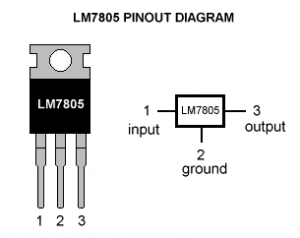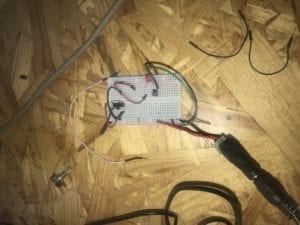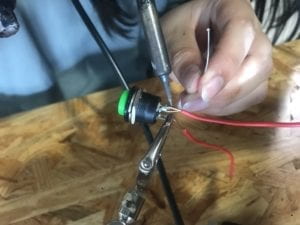My project partner and I managed to do the three circuits: The doorbell, the light and the dimmable light. The main struggle I encountered was understanding how the breadboard works and how to transfer the electricity from one part of the breadboard to the other. Another struggle was the bipolarity of the circuits components and understanding that there’s an input branch and an output.

These struggles were resolved as we kept on building the circuits and got used to using the breadboard and the wires. By the third circuit we had understood how it works and used less wire to connect the components as we placed them more strategically on the board.

The most enjoyable part of this recitation is managing to make the circuit work, testing it and getting the hoped result brings such satisfaction that it made me looking forward to doing the next one and challenging myself to make the circuit more complex.
Secondly we went to the solder station and made an arcade button with longer wires to connect them to our previous circuits. I had to really focus as it is burning hot and I tend to be easily distracted and unexpectedly I did burn my thumb.

The circuits are an interactive process when we use the definition “interaction: a cyclic process in which two actors alternately listen, think, and speak.”. There are two actors, my partner and I, and the circuits, we put the wires in such a way that we give the circuit an order and the machine listens to what we order it, and responds by getting the intended results (either make a sound, or make light).
I learned through this recitation, that interaction design and computer programming is used to create art, as it takes art to another level which wouldn’t be possible without them. There is so much more to explore and create since we have learnt about interaction. It is so as now we can create machine that interacts with us, and explore our senses in ways we aren’t used to which makes it art.